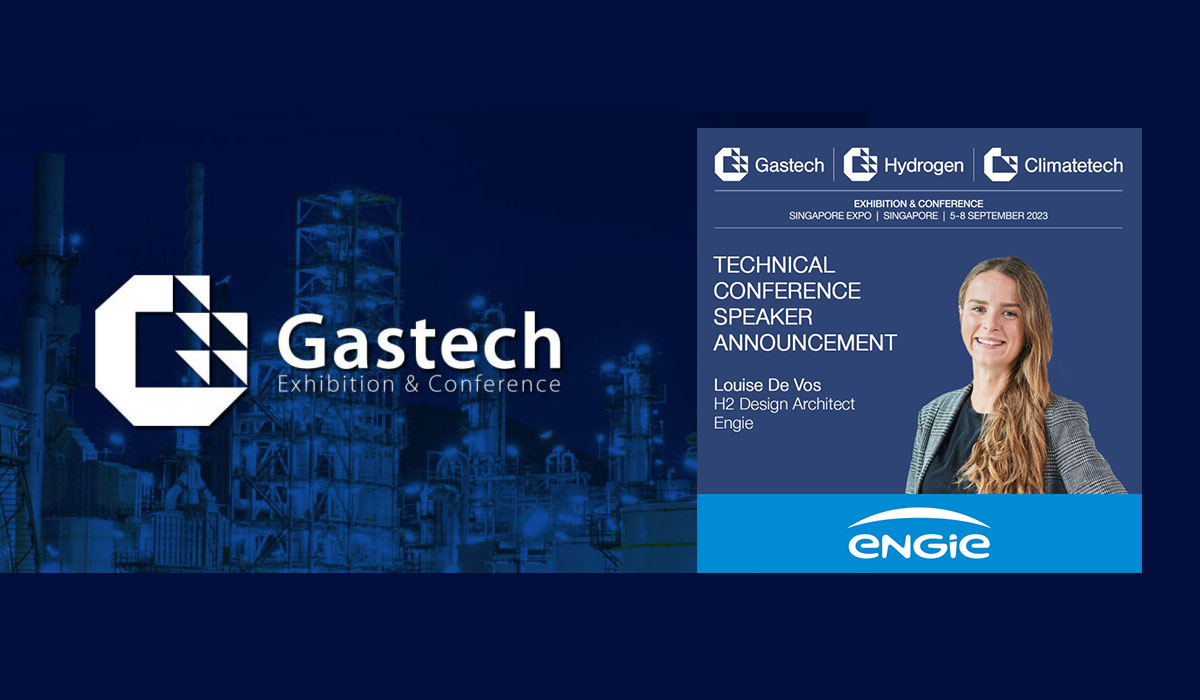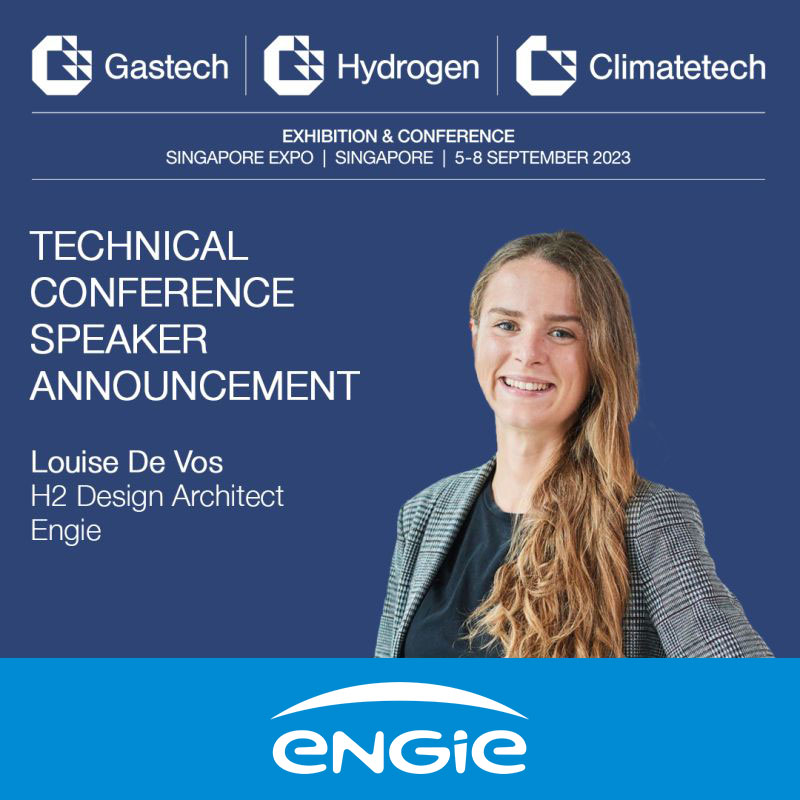This study, carried out jointly by the Flex Gen GBU and the Liquefaction Lab, was the subject of an article published in abstract form last June and will be presented for the first time at the GASTECH 'Technical & Commercial' conferences in Singapore.
This event marks the culmination of a successful collaboration between the GBU and ENGIE R&I to develop the production and transport of green hydrogen.

Here is a summary of Louise de Vos' presentation on a Technical and commercial conference at GASTECH - Singapore on the 6th of September 2023.
"Intermittency optimization for a renewable liquid hydrogen export value chain"
Liquid hydrogen will play a major role in the supply and use of renewable hydrogen in the aviation, maritime and road transport sectors for their decarbonization. It is an excellent energy carrier to deliver pure renewable fuel from renewable rich regions to renewable poorer regions. Moreover, the purity levels of liquid hydrogen are excellent, which is required for fuel cells that will be used in the transport sectors.
Hydrogen liquefaction was historically supplied continuously with hydrogen produced by Steam Methane Reforming (SMR). However, due to the decarbonization roadmaps of several countries and industries, as well as due to regulations, liquid hydrogen demand is expected to triple by 2025 compared to today and further rise thanks to the decarbonization of the transport sectors. This implies the necessity to adapt liquefaction technology to allow intermittent supply of renewable gaseous hydrogen.
In that context, our study and paper explore and assesse the technical constraints and economic interest of being able to operate the liquefaction on a flexible manner, meaning allowing a turndown of the liquefaction during production.
Our study focuses on large scale liquefier sizing of 100 tons per day, located in Australia for export to Singapore.
The impact of flexibility on the sizing and energy consumption of the upstream value chain comprising renewable power supply, electrolyser, gaseous hydrogen storage, liquefier and liquid hydrogen storage are studied. It compares different turndown levels, ranging from 20% to 95% minimum turndown. The economics of liquid hydrogen at at the export site are finally estimated and challenged.
Processes are simulated with Aspen HYSYS® in order to capture Specific Energy Consumption (SEC, in kWh/kgLH2) as well as over-sizing requirements evolutions with turndown levels. The value chain of the renewable liquid hydrogen production is modelled in Prosumer, an advanced simulation tool of ENGIE. The tool defines the optimal design of each of all the building blocks of the value chain aforementioned for the different turndown levels of liquefaction. These optimal configurations are defined with the objective function of minimizing the total cost of ownership (TCO) of the system. Inputs of the optimization are the renewable P50 profiles of a location in Australia, CAPEX and OPEX of equipment and their efficiencies.
The study shows the clear advantages of having a flexible liquefaction unit, even if it results in CAPEX increase of the liquefaction unit and efficiency loss. Levelized Cost of Hydrogen at the Export terminal shows improvements in case the liquefaction is flexible. It is therefore crucial that liquefaction developers consider the implementation of flexibility in their new and improved liquefaction units for LCOH optimization purposes.


